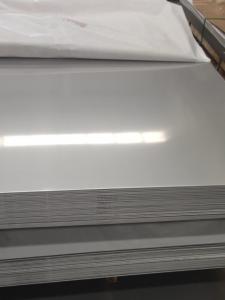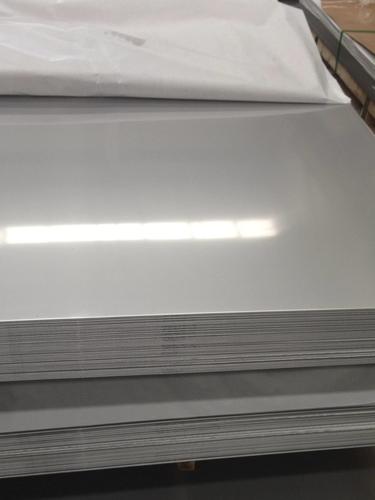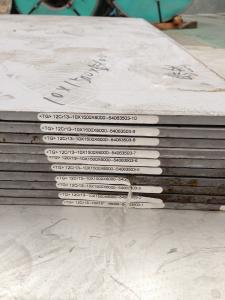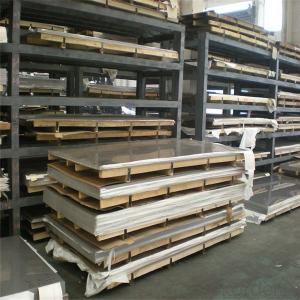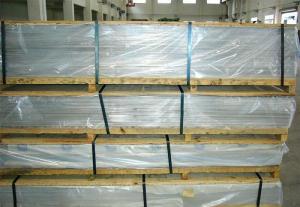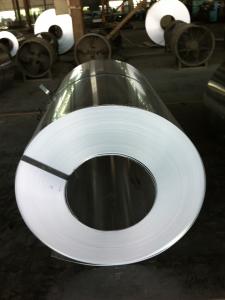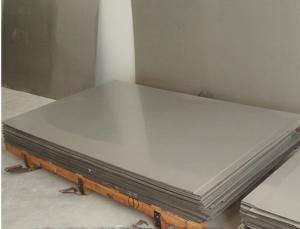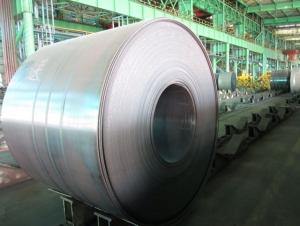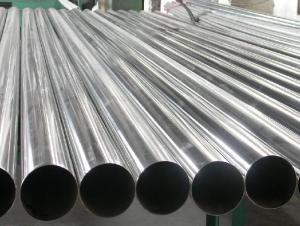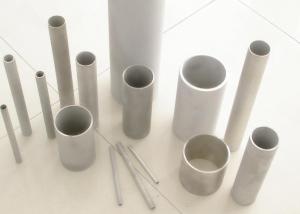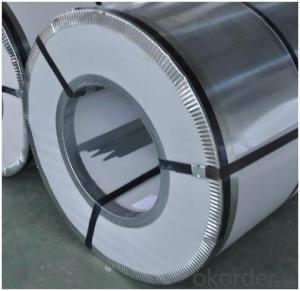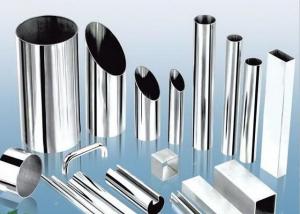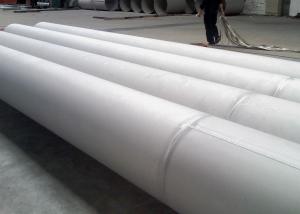Stainless Steel Cold Rolled Steel Sheet With Best Price In Warehouse
- Loading Port:
- Shanghai
- Payment Terms:
- TT or LC
- Min Order Qty:
- 6 m.t.
- Supply Capability:
- 5000 m.t./month
OKorder Service Pledge
OKorder Financial Service
You Might Also Like
1.Structure of Product Description
Cold rolled and hot rolled Stainless steel sheet are widely used in the field of construction field and decoration field, etc. There are many different grades, such as: 200 series, 300 series, 400 series, 900series, etc. The detailed grade are as follows: 201, 202, 301, 304, 316, 410, 420, 430, etc, or according to our client's requirement. if you are interested in it, please kindly show us your detailed inquiry, so that i can quote you price later.
2. Main features of the product
b. Frist-Class Service.
c. Shortest service.
3. Image.
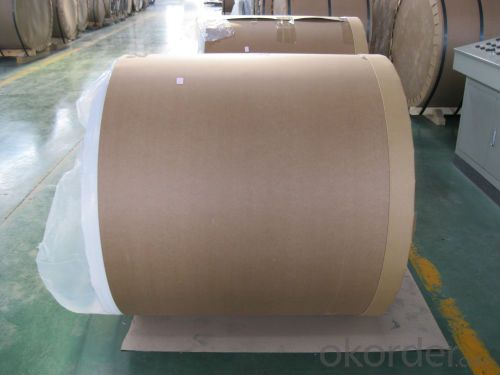
4. Product detailed sizes:
1220mm*2440mm, 1250mm*2500mm,1500mm*3000mm, etc.
5. FAQ:
What is the quality standard?
---Usually our standard is GB3880-2006 or else.
What is the width range?
What is the MOQ for your products yet?
---Normally it is around 3 tons/each size.
How many tons did you export in one year?
---Normally it is around 9000 tons totally.
Where is your client from?
---Normally it is from Japan, USA, ENGLISH, SINGAPORE, ETC.
What is your mainly products?
---Normally they are stainless steel sheet, stainless steel coil, stainless steel checkered sheet, stainless steel mirror finished sheet, color coated stainless steel sheet, etc.
- Q: Can stainless steel sheets be used for automotive body panels?
- Indeed, automotive body panels can indeed find utility in stainless steel sheets. The usage of stainless steel in automotive applications is widely favored due to its remarkable resistance to corrosion, exceptional strength, and enduring nature. It has the ability to endure unfavorable weather conditions, road salts, and other environmental factors without succumbing to rust or degradation. Furthermore, stainless steel possesses a lightweight characteristic, rendering it an optimal choice for the reduction of a vehicle's overall weight and enhancement of fuel efficiency. Yet, it is important to note that the employment of stainless steel may incur higher costs in comparison to alternative materials, potentially impacting its broad implementation in automotive body panels.
- Q: Can stainless steel sheets be formed into different shapes?
- Yes, stainless steel sheets can be formed into different shapes through processes such as bending, rolling, and stamping.
- Q: How do you remove adhesive residue from stainless steel sheets?
- To effectively eliminate adhesive residue from stainless steel sheets, the following steps can be followed: 1. Commence by delicately scraping off as much of the residue as possible using a plastic scraper or your fingernail. Exercise caution to avoid scratching the stainless steel surface. 2. Subsequently, moisten a soft cloth with warm water and a mild detergent or dish soap. Employ gentle circular motions to scrub the adhesive residue. Refrain from using abrasive cleaners or scrub brushes as they have the potential to harm the stainless steel finish. 3. If the adhesive residue persists, consider utilizing a non-abrasive cleaner specifically designed for stainless steel. Apply a small quantity of the cleaner to a soft cloth and gently rub the residue until it detaches. 4. In the case of tenacious adhesive residue, a paste can be concocted by combining baking soda and water. Apply the paste to the affected area and allow it to sit for a few minutes. Subsequently, utilize a soft cloth to gently scrub the residue in circular motions. 5. Thoroughly rinse the stainless steel sheet with warm water to eliminate any remaining residue or cleaner. 6. Finally, employ a clean, soft cloth to dry the surface, thereby preventing water spots and streaks. It is important to always test any cleaning method or product on a small, inconspicuous area of the stainless steel sheet prior to applying it to the entire surface. This precautionary measure ensures that no damage or discoloration occurs.
- Q: How do I remove stains or marks from stainless steel sheets?
- To remove stains or marks from stainless steel sheets, you can follow these simple steps: 1. Start by cleaning the stainless steel surface with a mild detergent or dish soap and warm water. Gently scrub the affected area using a soft cloth or sponge. Rinse thoroughly with clean water and dry with a clean towel. 2. If the stain persists, you can try using white vinegar. Dampen a cloth or sponge with vinegar and gently rub the stained area. Vinegar's acidic properties can help break down the stains. Rinse the surface with water and dry it thoroughly. 3. For tougher stains or marks, you can create a paste using baking soda and water. Apply the paste to the affected area and gently rub it in using a soft cloth or sponge. Let it sit for a few minutes, then rinse with water and dry thoroughly. 4. If the above methods do not work, you can try using a stainless steel cleaner specifically designed for removing stains or marks. Follow the instructions on the cleaner's packaging for best results. Remember to rinse the surface thoroughly and dry it completely after using a commercial cleaner. 5. It is important to avoid using abrasive cleaners, steel wool, or harsh chemicals on stainless steel sheets as they can scratch or damage the surface. Also, always test any cleaning method or product on a small, inconspicuous area before applying it to the entire surface. By following these steps and using the appropriate cleaning methods, you should be able to effectively remove stains or marks from stainless steel sheets and restore their original shine and appearance.
- Q: What are the benefits of using embossed stainless steel sheets in elevator interiors?
- Embossed stainless steel sheets offer numerous advantages when used in elevator interiors. To begin with, the incorporation of embossed stainless steel sheets brings an element of elegance and sophistication to the elevator's overall design. The visually appealing embossed patterns on the surface enhance the aesthetic appeal of the interior space, making it particularly desirable in upscale residential complexes and commercial buildings where a luxurious ambiance is sought after. Moreover, these sheets are highly durable and resistant to wear and tear, making them an ideal choice for elevator interiors. Given the constant use and potential for scratches, dents, and other damages, the embossed pattern on the stainless steel surface helps conceal minor imperfections, ensuring that the interior maintains its pristine appearance for an extended period. Additionally, stainless steel's corrosion resistance makes it suitable for environments with high humidity levels, such as elevator shafts. Furthermore, maintaining and cleaning embossed stainless steel sheets is a breeze. Elevator interiors are often exposed to dirt, fingerprints, and other stains. However, the smooth surface of embossed stainless steel allows for easy wiping, ensuring that the interior always appears clean and well-maintained. This aspect is particularly crucial in public spaces where cleanliness plays a significant role in creating a positive impression on users. Additionally, embossed stainless steel sheets offer a high level of customization. They can be manufactured in various patterns, textures, and finishes, providing endless design possibilities. This versatility allows architects and designers to create unique and personalized elevator interiors that align with the desired theme or branding of a building. Furthermore, embossed stainless steel can easily be matched with other interior design elements, including flooring, lighting fixtures, and wall coverings. In conclusion, the utilization of embossed stainless steel sheets in elevator interiors provides numerous benefits. These advantages include heightened visual appeal, durability, ease of maintenance, and customization options. These qualities make embossed stainless steel an ideal material for elevators in various settings, from commercial buildings to residential complexes, thereby enhancing the overall design and adding value and elegance.
- Q: How do you remove water stains from stainless steel sheets?
- In order to eliminate water stains from stainless steel sheets, the following steps can be followed: 1. Commence by using a soft, damp cloth to wipe the surface of the stainless steel sheet, removing any loose dirt or debris. 2. Combine warm water and mild dish soap in a bucket or bowl to create a solution. Immerse a clean cloth in the soapy water and squeeze out any excess liquid. 3. Delicately rub the cloth over the water stains on the stainless steel sheet, ensuring to follow the grain of the stainless steel to prevent further damage or scratching. 4. For more stubborn water stains, a non-abrasive cleaner specifically designed for stainless steel can be utilized. Apply a small amount of the cleaner to a clean cloth and gently rub it onto the stained areas. 5. Rinse the stainless steel sheet with clean water to eliminate any soap residue. Utilize a separate clean cloth or sponge to wipe away any remaining water. 6. To prevent future water stains, a stainless steel cleaner or polish can be applied to the surface. Follow the instructions on the product label for optimal results. Always remember to test any cleaning solution or product on a small, inconspicuous area of the stainless steel sheet before applying it to the entire surface. This will ensure that the cleaner or polish does not cause any damage or discoloration.
- Q: How do you prevent staining on stainless steel sheets?
- To prevent staining on stainless steel sheets, it is important to regularly clean and maintain them. This can be done by using non-abrasive cleaners specifically designed for stainless steel, avoiding harsh chemicals and abrasive materials that can scratch the surface. Additionally, wiping away spills or moisture promptly and drying the sheets thoroughly after cleaning can help prevent staining. Using protective coatings or sealants specifically made for stainless steel can also offer an extra layer of protection against staining.
- Q: Is Baoding mirror stainless steel plate mirror on both sides?
- Yes, mirror stainless steel plate is divided into: single universal grinding 8K stainless steel plate, stainless steel plate, 8K universal grinding double-sided single-sided grinding 8K stainless steel plate, double-sided grinding of 8K stainless steel plate, manufacturers generally can be customized according to your requirements, the price is not the same.
- Q: How do stainless steel sheets compare to other materials?
- Stainless steel sheets have several advantages over other materials, making them a popular choice in various industries. Firstly, stainless steel is known for its exceptional durability and strength. It can withstand high temperatures, pressure, and corrosion, making it suitable for a wide range of applications. This durability ensures a longer lifespan and reduces the need for frequent replacements, saving both time and money. Secondly, stainless steel sheets have excellent resistance to corrosion and rust. This property is particularly important in environments with high humidity or exposure to chemicals, as it prevents degradation and maintains the integrity of the material. Other materials, such as aluminum or carbon steel, may require protective coatings or regular maintenance to achieve similar levels of corrosion resistance. Furthermore, stainless steel sheets have a clean and smooth surface finish, making them aesthetically pleasing and easy to clean. This quality is crucial in industries such as food processing, pharmaceuticals, and healthcare, where hygiene and cleanliness are paramount. Stainless steel sheets also offer versatility in terms of fabrication and customization. They can be easily formed, welded, and shaped into different sizes and configurations, allowing for a wide range of applications. This versatility makes stainless steel sheets suitable for architectural, automotive, and industrial uses. Lastly, stainless steel is environmentally friendly. It is 100% recyclable, meaning that it can be melted down and reused without any loss in quality or performance. This recyclability reduces the demand for new materials and lessens the environmental impact associated with manufacturing processes. In summary, stainless steel sheets outperform other materials in terms of durability, corrosion resistance, cleanliness, versatility, and environmental sustainability. These qualities make stainless steel sheets a superior choice for various industries and applications.
- Q: What are the common manufacturing standards for stainless steel sheets?
- The common manufacturing standards for stainless steel sheets include ASTM A240, ASME SA240, EN 10028-7, and JIS G4304. These standards specify the chemical composition, mechanical properties, tolerances, and surface finishes required for stainless steel sheets used in various industries.
Send your message to us
Stainless Steel Cold Rolled Steel Sheet With Best Price In Warehouse
- Loading Port:
- Shanghai
- Payment Terms:
- TT or LC
- Min Order Qty:
- 6 m.t.
- Supply Capability:
- 5000 m.t./month
OKorder Service Pledge
OKorder Financial Service
Similar products
Hot products
Hot Searches
Related keywords
